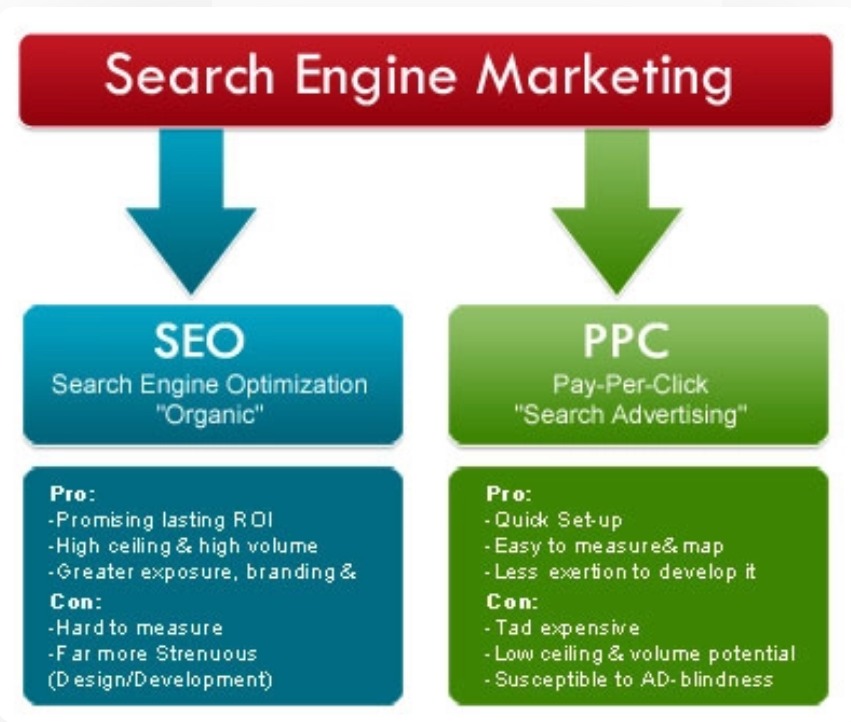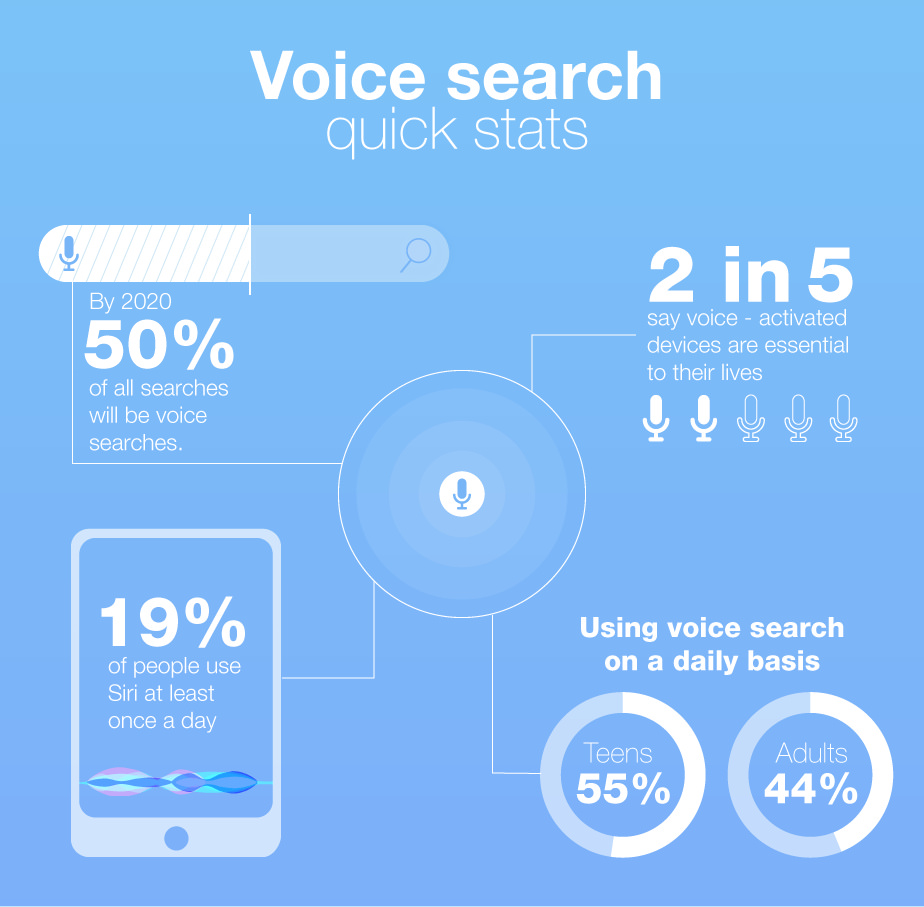
The essentials of B2B search marketing
If you’ve ever gone searching for information on the internet about a product you were interested in buying, you’ve replicated one of the critical parts of the B2B customer purchasing journey. Business buyers spend 27% of their time independently researching potential purchases online. Savvy B2B marketers, who know where that research begins – search engines – can capitalize on this by using Search Marketing tactics.
Search marketing lets a business capture valuable leads from buyers researching a purchase. By marketing through search engine results and paid search advertising, a company can capture high-quality leads with the intent to buy. These leads are educating themselves on problems and searching for solutions, and are the best B2B leads you can acquire because they possess a magical quality – purchase intent.
Of B2B buyers surveyed, 77% say they won’t even speak with a salesperson until they’ve done their own purchasing research. But if you can get your brand in front of them during that process, you’re positioned to onboard a lead primed to convert.
Search is becoming more important in B2B purchasing, as, increasingly, B2B researchers are millennials who tend to prefer independent research first, via search engines.
This generational shift is changing how businesses find brands and products. As a result, having an effective Search Marketing strategy is more important than ever. While search engine marketing success can be like trying to hit a moving target, it comes down to understanding a few key concepts and strategies that will put your business front and center in search – and create a flow of high-converting leads.
What is B2B search marketing?
First, let’s get clear on exactly what B2B Search Marketing is. B2B Search Engine Marketing (SEM) is the process and science of attracting motivated customers to your business by increasing its website’s visibility in major search engine results (i.e., Google, Bing, and Yahoo). Research indicates that 72% of all b2b buyers begin their research at a search engine, which shows how important this is to your business.
Search Marketing combines two disciplines: SEO (Search Engine Optimization) and SEM (Search Engine Marketing).
SEO is optimizing your website to be more attractive to the algorithms of search engines. The end goal is to achieve higher rankings in organic (unpaid) search. Websites that rank high in organic search are considered more genuine by searchers and are more likely to be clicked on. Research on B2B has indicated that organic traffic accounts for 76% of trackable website traffic.
SEM is a collection of internet advertising techniques designed around pay-per-click (PPC) ads. PPC advertising allows your B2B company to pay a set fee to have text-based advertisements appear in paid search results. Regardless of how frequently the listing is displayed, you will only be charged when a searcher clicks on your ad then visits your site.
An effective B2B Search Marketing strategy leverages both SEO and SEM (via PPC). It’s built around a thorough understanding of your customers, what they’re searching for, and how they’re searching for it (via specific keywords and phrases). The strategy then engages them where they’re at on their buying journey with precisely what they need.

Who should do search marketing, and why?
If you’re doing business on the internet, you need to be doing Search Marketing. Full stop. To not do so would be to turn your back on the millions of potential customers searching the internet daily for solutions to their problems – solutions that your business can provide. Wouldn’t you like your company to appear in the search results so that they can find the solution they’re looking for? This is why Search Marketing is essential for all businesses looking to grow.
But what if no one (or very few people) is looking for your solution on search engines? Does that mean you shouldn’t be doing Search Marketing? No, it means quite the opposite. By researching your target personas and ideal customers, you can discover what they are searching for and start creating a lead funnel for them. Then you can generate awareness for your solution with search engine optimized top-of-funnel (TOFU) content and ads – allowing you to rank high in search and capture those leads!
Recommended for further reading
What are the benefits of search marketing?
Showing up at the top of the search, either organically or through paid ads, has significant advantages for B2B:
- It creates an opportunity to get in front of high-intent searchers at the exact moment they need what you offer.
- It increases the value of your content creation efforts. Having SEO-optimized content that shows your brand knows its business or proves your product does what it says on the tin builds customer trust and authority. Your content becomes an engine for conversions.
- With more and more customers using mobile or voice search, having websites, content, and ads optimized for both offers new sources of motivated leads.
- Customers found through SEM via PPC ads have been shown to have a High Customer Lifetime Value (CLV) and increased ROI – so why not go after more valuable leads where you can get them?
- There’s more opportunity for B2B marketers in search because, unlike B2C, many B2B search results are not yet crowded. With many larger B2B companies not yet pursuing aggressive SEO and SEM, a smart company can find a strategic advantage by going after high search rankings.

How to create a winning B2B search marketing strategy
Many companies make the mistake of jumping into Search Marketing without a coherent plan. This is always a mistake, as search engines’ algorithms are shifty and don’t suffer fools. The key is to begin with a strong base that will provide you with the best path to success. Here are five blocks to build a winning foundation for a high-converting strategy.
1. The Importance of Customer Research
To capitalize on the search, you first need to research your ideal customer. You need to know who they are, what problems they have, where they are located, who does the research and who does the buying, and what products or services they are interested in. You also need to understand how your business can be the solution they need. With this information, you can develop detailed customer personas that will allow you to target them with ads and content.
The next thing you need to know is how your ideal customers are looking for what they need. Knowing the words and phrases they use in search will allow you to create a detailed list of keywords. You can then use these search terms to optimize your website, content, and ads to rank higher in search when your targets search for the keywords.
A good tip to increase the effectiveness of your keyword research is to go beyond what someone is searching for to find you and your solution. For example, if you sell CRM software, you shouldn’t only place ads or write keyword-optimized content around CRM. What you want is to understand the pain points of your target persona. In our example, lead nurturing is a pain point for someone who uses a CRM for B2B lead generation. To find leads more effectively, you would want to target the keyword cluster around lead nurturing with content and ads.
Knowing your target audience also has rewards in paid search. Ad platforms like Google Ads allow you to layer on different audiences in addition to your keywords to create more targeted ads. Bing ads through Microsoft Advertising are now even integrated with LinkedIn. The more you know about your targets, the more strategic you can get within the ad platforms – and the better results you’ll get.
2. SEO + SEM
For your strategy to be a winner, it needs to be balanced between SEO and SEM so that your company takes up the most real estate on a search engine results page (SERP). SEO and SEM are essential to the whole customer experience because search is the adhesive that binds your customer touchpoints.
One of the biggest mistakes a business can make is not investing in SEO for their website. SEO raises the visibility of your pages in search results. When you do it correctly, prospects are likelier to click on your listing because it closely matches what they’re looking for. Ensure that your keywords are carefully chosen using proven SEO tactics and keyword tools, and are placed appropriately within your website and your content. Be aware that Google’s algorithm frowns on “keyword stuffing” and instead prefers keywords organically written within content that presents real value to searchers.
SEM allows B2B marketers the exclusive opportunity to display ads to their ideal targets when they want to purchase a solution. When creating PPC ads (or similar shopping ads found in the search results above), be sure to utilize relevant keywords – and avoid negative keywords, which are irrelevant terms without a meaningful success rate for conversions.
It’s crucial to have organized SEM advertising campaigns that focus on similar products or services, and are optimally structured with five elements: the campaign itself, ad groups (subcategories of products or services), keywords, ad copy, and landing pages. Take full advantage of any additional targeting options offered by the specific platform where your campaign will run.
3. Create a Foundation of Content
Engaging and valuable content is a strong foundation of any Search Marketing strategy. Google and other search engines look for this kind of content. If your business can both provide and optimize it, it will go a long way toward connecting with your target audience in search.
Use SEO to optimize any content you create, whether it’s website copy, a blog, a whitepaper, an infographic, or a video. Your content should educate and engage potential customers, giving them solutions to their problems and answers to questions they have yet to ask.
How can you consistently create valuable content that ranks for competitive keywords and appears in searches? Make sure it has these three attributes:
- It should be timely, like a blog post about the latest innovations or breaking industry news.
- It should be connected. Including links to and from your content increases its likelihood of ranking high in search results – and provides value to readers or viewers.
- Embrace variety, such as following that blog post with a video, then an infographic, then a whitepaper, and so on. Changing it up is good for searchers and for searchers.
4. Develop user engagement
Getting leads to engage with your business is a surefire way to build relationships that result not just in sales but in repeat sales. Search Marketing provides a great way to do that. There’s been a substantial shift in how Google evaluates websites. It has changed SEO from exclusively trying to satisfy the search engine algorithm to trying to meet the user’s needs and expectations through engagement. What this means for B2B marketers is that not only is it key to have valuable content, it’s time to look at new ways of engaging through search.
One of the growing technologies in this arena is Voice Search. Currently, 20% of searches on Google come from voice search. With this figure expected to keep rising, it’s “Hey, Google!” time for B2B marketers. Smart speakers, like Amazon’s Echo, are now owned by over 66 million Americans—and most people have a smartphone. Voice Search is changing how everyone, including B2B buyers, engages with search.

Image Source: www.sayonetech.com
However, traditional SEO isn’t going to help you optimize your website or ads for voice search. Instead, you’ll need to adapt your strategy to incorporate the use of conversational language, long-tail question queries, and featured snippets (search results that answer questions right away) with your authoritative content to engage with voice search. When your ideal customer asks, “Hey Google, who has the best Social CRM?” you’ll need that question and answer on your website, in your content, and in your ads to make the connection.
5. Connecting search with social
Finally, an underrated but essential part of Search Marketing is connecting search and social media. Social media has been shown to affect search rankings indirectly. Social media sharing of your website content is a powerful force to drive traffic back to your website.
From a sales perspective, social is a part of a holistic view of Search Marketing. By optimizing your social media pages and running social media PPC campaigns, you can duplicate your efforts within the context of a specific social platform. Social media also leads to increased engagement and trust in your brand, which leads to more leads entering your funnel through traditional search.
To effectively link social media with search marketing, employ the same keyword and voice optimization principles to your pages and advertisements. Share your website content across platforms and in social PPC ads targeted at your ideal customers. Then, manage all of it using a comprehensive social media management platform that also includes robust analytics so you can easily post, measure, and adjust.
Conclusion
Search marketing is essential for any Internet business. For B2B marketers, it offers an opportunity to meet leads at the exact right moment and bring them into a value-packed funnel that leads to conversions. By balancing your efforts between SEO and SEM, you’ll be able to stay top of mind and on top of search for potential customers. Be sure to know your targets well, engage them with great content on social media, and provide the answers to their questions. These essential tips will help you create a winning Search Marketing strategy with high ROI that continues to grow your business now and in the future.


